SS thugs covered up the mass murders of Sobibor, now two scientists have unearthed the gas chambers of the extermination camp – a historically significant find. Visit the place of horror.
The remains of the death factory hidden deep in the forest. It smells of moss, trees creaking in the wind, a deer scurrying through the undergrowth. The pine forest at the old railway station of Sobibor is peaceful at this September day. Here once brought SS officers and their minions tens of thousands of defenseless Jews and Roma. The chimneys of the crematoria smoked for months.
In a clearing newly exposed foundations and ruins can be seen: the putative remains of four gas chambers. Each about five by seven feet tall – on death row for 70 to 100 people.
“Here they have the Jews driven into,” says Yoram Haimi and points to a gap between the reddish bricks. “And there was probably the motor, the exhaust gases have passed into the chambers,” says Wojciech Mazurek. Excitement about the historically significant sites, the two archaeologists from Israel and Poland constantly fall into the word.
In the past few days have Haimi, 53, and Mazurek, 54, dug the gas chambers of Sobibor. 71 years after the Nazis destroyed the extermination camp, where they had killed 170,000 to 250,000 people. Haimi and Mazurek have revealed what the perpetrators have been filled. Their findings will make the horrors of Sobibor tangible.
Nowhere the Nazis have their killing machine so perfected as here in the remote eastern Poland. Under the code name “Aktion Reinhardt” they planned under the direction of SS officials Odilo Globocnik and Christian Wirth three camps: Sobibor, Belzec, Treblinka. With one goal: to liquidate all the Jews of the “General Government” in occupied Poland systematically.
Unlike Auschwitz Sobibor, Belzec and Treblinka were from the outset pure Nazi extermination camp. Very few newcomers were used for forced labor, the rest was sent directly from the freight car in the gas chambers, after a cruel sophisticated logistics. Estimated 1.4 million Jews from Poland, the Netherlands, Germany and other countries died in the three camps: more than in Auschwitz-Birkenau, the synonym for industrial mass murder.
Unlike Auschwitz the “Aktion Reinhardt” left no barracks, no mountains of eyeglasses, shoes or human hair, no visible remnants of destruction facilities. Middle of the war, the criminals set about methodically wipe out the Jews according to their own tracks: Between November 1942 and December 1943 they exhumed corpses, killing almost all of the remaining occupants of the three eastern Nazi camp and burned all the mortal remains.
The murderer destroyed plans and documents, dragged the building to its foundations and took away the debris. They paved terrain one, planted forests, settled on farms. The “Aktion Reinhardt” was secret Reich matter. It should be the perfect crime.
Archaeologists in the Nazi camp Sobibor: A few witnesses, hardly Images
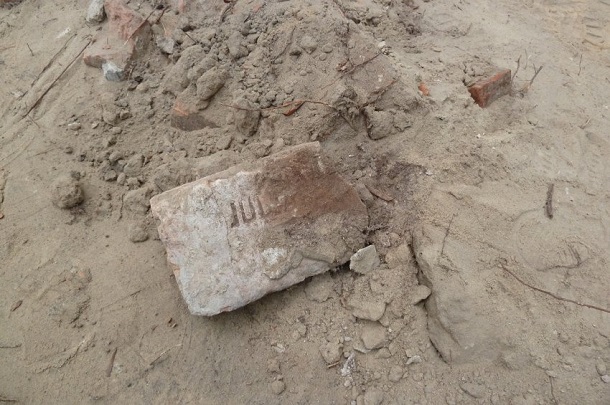
The murder apparatus was tremendously efficient: Approximately 30 SS men and 120 Eastern European “auxiliary volunteers”, including John Demjanjuk, were enough to kill 170,000 to 250,000 Jews in Sobibor. Not more than 50 inmates who broke out in a riot, survived the war. In Treblinka were about 60 survivors to nearly 800,000 deaths. In Belzec, where more than 430,000 people were killed, eight people rescued.
Therefore, the “Aktion Reinhardt” camp are today not as infamous as Auschwitz: Because there were few witnesses who could tell posterity their fate. Because no images have surfaced from the three death camps. And because not a single gas chamber was exposed. Until now – up to the findings of Sobibor.
Carefully scoop the Polish workers in the excavation site the sand in the wheelbarrow. Almost everything is done just by hand.
Would be too large a risk that machines destroy fragile remains of walls or important objects are lost, and explain Haimi Mazurek. For seven years exploring the two archaeologists Sobibor. They dug up the remains of the ramp, where the deportees arrived. They discovered half commenced escape tunnel and the “Ascension Street” – so the perpetrators called cynical the 230-meter-long path through which they drove the naked Jews after the haircut, down to the alleged showers.
Now archaeologists have uncovered the gas chambers: a few steps beside the old monument to the victims, hidden under a thick layer of asphalt. “I have always suspected that they are here,” says Yoram Haimi.
In April 2007, the Israeli first came to Sobibor: as a visitor, to commemorate his two uncles who died here. “At that time, the museum was closed. There were monuments to see, but nothing that showed how and where was murdered,” said Haimi recalls. “Abstract” had seemed to him the memorial, except it was hardly a soul there.
On site, resolved the archaeologist, who specialized in the Negev desert in Israel in excavations of Neolithic to manually search for the remains of Sobibor. He soon found an enthusiastic partner: the poles Mazurek. The two recruited from private sources, to sponsors, persuaded the management to grant them permits. And digging going on. The first three years at your own risk.
Sobibor then threatened more and more to fall into oblivion – just like after the war. Although a judicial officer had 1946 marks the approximate location of the gas chambers in the course of a war crimes trial. But the communist government had no interest to address the eradication of unpopular among many Poles Jews – although this region was once dominated by them.
So the city had Vlodava, one of its municipal area Sobibor, before the war, more than 5,000 Jewish inhabitants. 2014 live here exactly two Jewish families, says Mazurek. “They profess to date publicly not to their faith.”
Archaeologists in the Nazi camp Sobibor: Asphalt over the mass grave
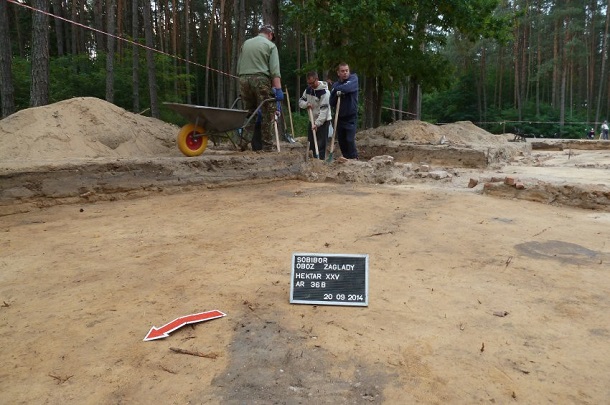
For two decades, used primarily farmers and loggers the site. Mid-sixties were erected a monument as well as a symbolic mausoleum near the mark of 1946, and the square was paved all around. “That was very lucky: The asphalt has the foundations of the gas chambers protected,” says Mazurek.
Already in 2010, archaeologists discovered off the pitch remains of barrier fences, a year later they found the “Assumption road”. “It was pretty clear that in the end would be the gas chambers,” says Haimi. But they did not ran. The memorial stood on the brink of: lack of money had to be temporarily closed all visitor facilities. Then the Foundation Polish-German reconciliation and the Majdanek Museum took over the responsibility for the site.
Haimi and Mazurek dug further, found the remains of fences, barracks and crematoria, as well as several skeletons – and circled the post in question more and more a. Finally, they gave the rabbi of Warsaw permission to tear up the asphalt on the presumed mass grave.
On September 8, it was so far: The archaeologists discovered a ruined wall of red brick, shortly after the next. “Since we both looked at us and smiled at the same time,” says Mazurek. “We knew that now we have made it.”
Recent evidence that on these foundations were the gas chambers, they have not yet. But all indications are: the situation between “Ascension Street”, crematorium and the remains of a hut of the “Sonderkommando” as well as a water hole. This past Wednesday, the experts came from Auschwitz. “You said once: ‘That’s it’,” says Haimi.
The next day was the message from Sobibor around the world. The discovery is of “utmost importance for Holocaust research,” says David Silver Sound, a historian at Jerusalem’s Yad Vashem. You’ll be able to estimate the number of victims precision and know precisely how the murder in the camp was going on. “Suddenly,” says the newspaper quoted “Haaretz” silver tone, “come from the ruins, from below the asphalt, voices of Jews who speak to us.”
Archaeologists in the Nazi camp Sobibor: Amulet with Star of David
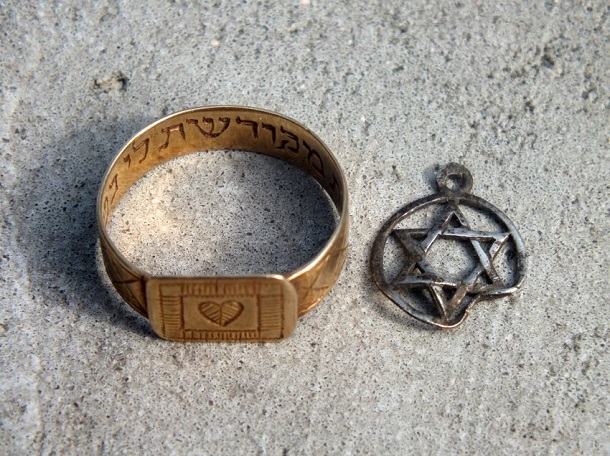
As before, let the archaeologists in some places every shovelful of sand by hand using seven. So they track down not only the remains of killing plants, but also traces of Jewish life. For instance there is the tiny amulet with the Star of David. The wedding ring with the “Look, you’re married to me.” And a metal tag with name and birth date of the then six-year-old Judith Lea de la Penha from Amsterdam.
After the finding Dutch television made a documentary about the child and his family. Photos emerged: they show a girl with curly brown hair and big eyes surrounded by his loved ones in front of a decorated evergreen. The anonymous dead of Sobibor getting a facial.
“This is a victory – not only for us survivors, but for humanity,” the Sobibor survivor Philip Bialowitz said in an interview with. The 84-year-old, who broke the location Uprising on October 14, 1943 (more on this in an interview), is one of only six or seven inmates who are still alive today. According to the Amsterdam Sobibor Foundation a Sobibor survivor to have died in New Zealand just last week. Soon there will be no more witnesses who can report on the horrors of Sobibor, Belzec and Treblinka. All the more important new discoveries. “People want authenticity,” says Haimi.
Archaeologists in the Nazi camp Sobibor: Open field of corpses
The archaeologist kneels a few dozen steps above the excavations on the ground, he lifts small whitish, perforated chunks on. “These are all bone fragments, here was a crematorium,” he explains. “If they are all white, the fire was very hot.” Sobibor is still an open field of corpses.
Next year should here the construction start for a new memorial about the discoveries. Converted good seven million euros it will cost. After a long tug of war, the federal government is next to Poland and the Netherlands now participate, the grand coalition makes it possible. Among black and yellow, there was still no decision. How great is the ignorance of Sobibor, showed an expression of the former Minister of State at the Foreign Office from the past year. Cornelia Pieper (FDP) spread all seriousness, German had not been among those arrested. In fact, several thousand German Jews were among the victims.
How hard it is for Jews in Poland today that has Wojciech Mazurek just learned. After the great discovery he attended one of the two Jewish families from Vlodava and invited them to Sobibor. The family politely declined – they do not want to come out before their Polish compatriots.
[adrotate group=”16″]

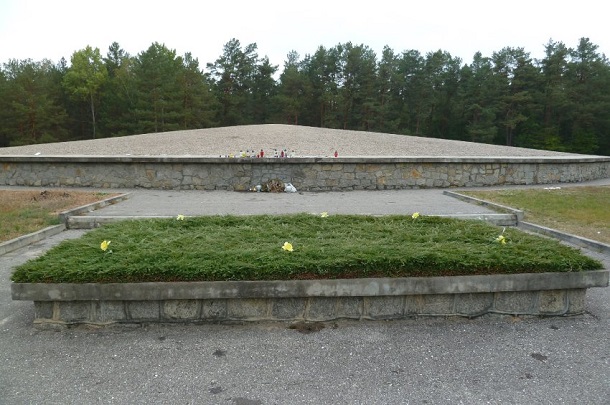
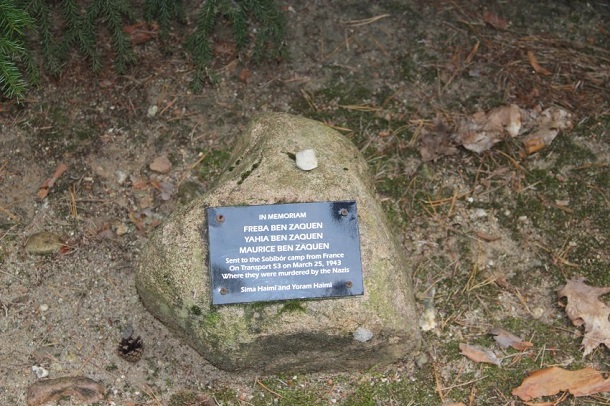
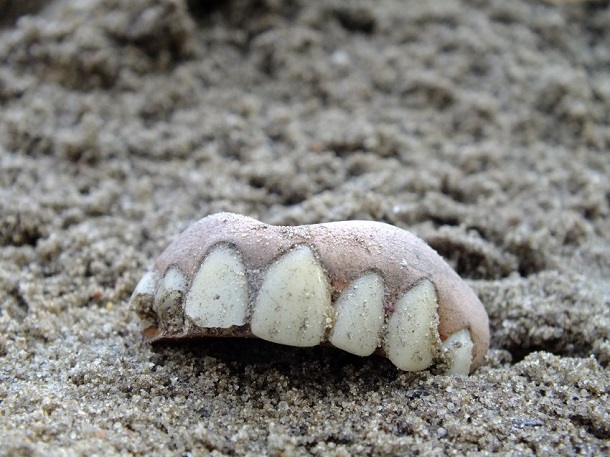
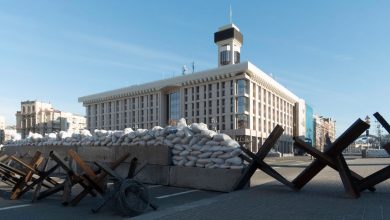


There were no “Polish” camps, only Polish victims! Polish Christians were the first victims of the GERMAN camps in occupied Poland. Please make a correction and refrain from distorting history and misleading your readers. Even the Association of German Historians has condemned the use of such language!
This was a German Nazi camp in German occupied Poland. Just thought your article should make this clear. I didn’t see the word German anywhere.
The term ‘eastern Polish camp’ is offensive and incorrect. The German Nazis established the ‘camps’ on occupied Polish soil. The camps were not Polish as implied by the comment. Please correct the error.